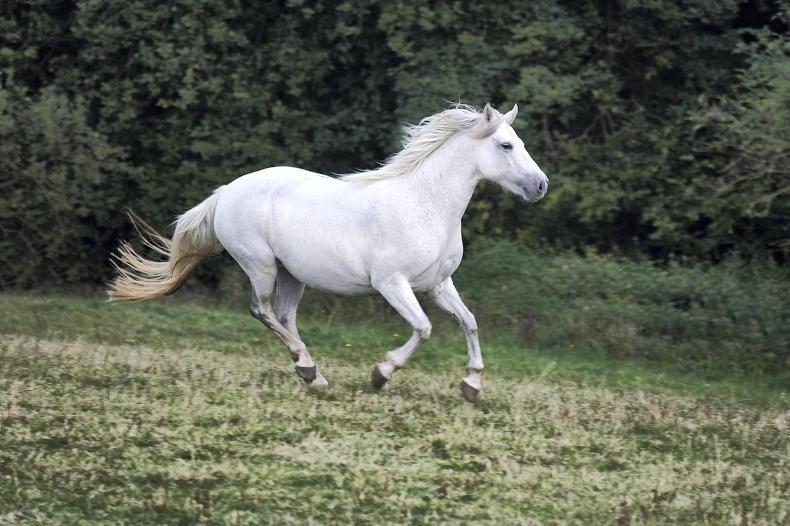CONNEMARA Ponies have thrived for hundreds of years in the beautiful, but sparse, mountains of Connemara in the west of Ireland and their body systems have adapted to gaining the nutrients required to survive from the minimum amount of feed.
Nowadays, Irish grass is naturally rich in non-structural carbohydrates (high simple sugars) and grass pastures that ponies are turned out on are often very different nutritionally to what the Connemara Pony has evolved to survive on.
Being over-conditioned, or obese, is known to be a major risk factor for high blood insulin concentration in horses and ponies, as it is in humans and other species. A high insulin concentration is believed to cause a disruption in the integrity of the sensitive tissues in the hoof, causing inflammation and resulting in endocrinopathic laminitis.
Intermittent lameness
It has always been observed that overweight ponies were prone to sore feet or intermittent lameness, but it is only in the last 20 years that the exact mechanism of this condition has been explored and elucidated. It is now recognised as one of the primary health concerns facing ponies in the UK and probably also in Ireland.
The Equine Clinical Studies research team from the UCD School of Veterinary Medicine performed a study to assess how common obesity and associated metabolic conditions are in the native Irish Connemara pony breed. This is the first study to focus on obesity and associated metabolic diseases in Irish ponies specifically. Connemara ponies from around Ireland were involved in the study, including ponies from Dublin and surrounding counties, although the majority were from Connemara, Co Galway.
The first part of the study was to assess body condition in the ponies. The Body Condition Score (BCS) is the main criterion used to assess obesity. The BCS used in horses is on a 1-9 scale. It focuses on six different regions on the pony’s body and gives a score to each based on the amount of fat cover; it then calculates an average score. This is analogous to the BMI, which is a formula used in humans based on their weight, height and age.
Metabolic abnormalities
Ponies’ regionalised fat deposits were also assessed using the cresty neck score (CNS) and the presence of fat deposits in various parts of the ponies’ bodies. This was important to include, as some lean ponies can have a normal BCS of four or five out of nine, yet have abnormal regional fat deposits around their bodies that can be associated with metabolic abnormalities.
Measurements from blood samples taken from the ponies included insulin concentration before and after a sugar challenge, and glucose and triglycerides concentrations.
This study showed that obese Connemara ponies (BCS = 7) were almost seven times more at risk of having a higher-than-normal concentration of insulin in the circulating blood. These results were found to be similar to those found in studies of many other breeds of ponies around the world.
These findings are very important to highlight the risks associated with obesity in the breed and to help educate owners and breeders. Improving diet and changing management (balanced exercise and diet) can reduce the risk of laminitis.
Horse owners should focus on managing the amount and content of their pony feed, based on body requirement. Always seek advice from vets and qualified equine nutritionists to achieve a balanced diet plan for their ponies.
There is probably a genetic predisposition to being overweight; these ponies are considered to be “easy keepers” and it can be very difficult to get them to lose weight. Management systems may also contribute to the problem, whereby there may be a tradition or yard culture of supplementary feeding with high sugar concentrate feeds, even for horses and ponies at a relatively low plane of exercise. Care should be taken to feed at risk horses and ponies low-sugar feeds, to which oil can be added for energy.
This paper didn’t focus on the effects of management systems or genetics, but our research group is currently analysing the other factors from the data collected.




 This is a subscriber-only article
This is a subscriber-only article
 It looks like you're browsing in private mode
It looks like you're browsing in private mode










SHARING OPTIONS: